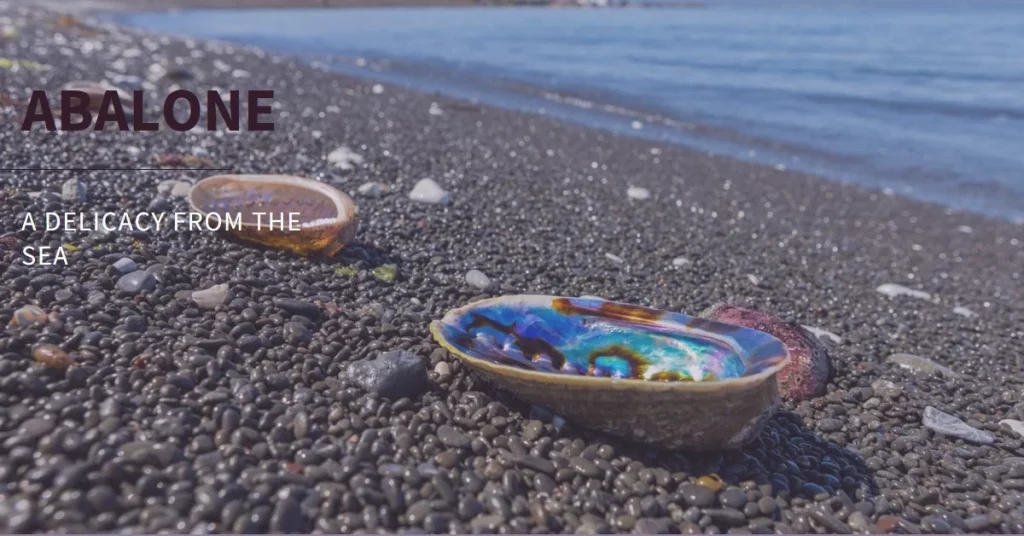What is the difference between Abalone and Mother of Pearl?
Abalone and mother of pearl are two different materials that come from sea creatures. Each one has its own unique characteristics that make them special.
Abalone is a type of edible sea snail found in coastal waters, while mother of pearl is the shiny inner lining of mollusk shells, including abalone shells.
We will explore the main differences between abalone and mother of pearl. Let’s dive in and discover what makes these natural materials so interesting!
Abalone

Abalone are a type of gastropod shellfish, known for their striking ear-shaped shells.
These shells can find in different size, from a few centimeters to up to 30 centimeters.
They are often characterized by their row of holes or respiratory pores, which the abalone uses for expelling water and waste.
Abalone shells find in different colors, from deep blues and greens to vibrant pinks and purples.
These beautiful shells are made of calcium carbonate, which the abalone secretes as it grows.
The shell’s many layers create a strong, protective barrier for the abalone, allowing it to survive in harsh marine environments.
Each layer consists of microscopic platelets, which give the shell both its unique iridescence and remarkable strength.
- Appearance: Abalone shell features a rough exterior with vibrant, iridescent colors on the interior.
- Texture: The outer surface is rough and textured, while the inner surface is smooth and shiny.
- Composition: Abalone is primarily composed of calcium carbonate and aragonite, with the mother of pearl layer lining the interior of the shell.
Mother of Pearl

Mother of pearl, also known as nacre, is the iridescent internal layer found within the shells of certain mollusks, including abalone and pearl oysters.
This smooth, shimmering substance is composed of microscopic, hexagonal calcium carbonate platelets, which are held together by a protein matrix.
This arrangement provides strength, resilience, and flexibility to the nacre.
While both abalone shells and mother of pearl share the trait of iridescence, they differ in terms of their prominence in the mollusk’s shell.
In abalone shells, the iridescence is present throughout the entire shell, while in other mollusks, mother of pearl is typically confined to the inner layer.
- Appearance: Mother of Pearl exhibits a pearly luster with varying tones of color, usually white, cream, or silver.
- Texture: Smooth and lustrous, with a subtle wave-like pattern.
- Composition: Mother of Pearl is primarily composed of calcium carbonate and aragonite and is the innermost lining of mollusk shells, including pearl oysters, freshwater pearl mussels, and abalone.
Read also : Difference Between Jade and Aventurine
Difference between abalone and mother

- Harvesting: Abalone is harvest for its flesh, which is consider a delicacy, and its shells. Which are often used in decorative crafts; Mother of Pearl is directly obtained from the shells of pearl oysters and freshwater pearl mussels.
- Processing: Abalone shells are clean and polish to reveal the vibrant interior. Mother of Pearl is carefully extracted from the shells and then shaped and polished.
- Commercial Uses: Abalone is used in jewelry, handicrafts, and musical instruments; Mother of Pearl is commonly used as an inlay material for decorative items, jewelry, and high-end musical instruments.
Consumer Perception & Cultural Significance
- Abalone: Abalone shells are highly valued for their special and vivid colors, as well as their rarity. They have great cultural importance in various indigenous coastal communities. one use of abalone was money in old times and as decorative items in spiritual ceremonies.
- Mother of Pearl: Mother of Pearl is a stunning material known for its gentle shimmer and natural allure. It has always been highly prized as a sign of richness and indulgence. People love to use it for intricate decorations and carvings, which adds a touch of class and refinement.
Pros and Cons
Abalone
- Pros: Striking appearance, rarity, and cultural importance.
- Cons: Expensive and may carry significant ecological impact if not responsibly sourced.
Mother of Pearl
- Pros: More abundant and versatile, adds a touch of luxury to various products.
- Cons: May not be as visually striking as abalone and can require meticulous sourcing to ensure sustainability and ethical practices.
Comparison Table mother of pearl and abalone
Here’s a table highlighting of key difference of abalone vs mother of pearl:
| Abalone | Mother of Pearl | |
|---|---|---|
| Definition | A type of mollusk characterized by its ear-shaped shell | The iridescent substance lining the inner layer of certain shells |
| Origin | Found in coastal waters, primarily in California | Found in various species of mollusks worldwide |
| Composition | Composed of calcium carbonate and proteins | Composed primarily of aragonite crystals |
| Appearance | Outer shell is rough and dull | Inner layer has a smooth, lustrous appearance |
| Colors | Multiple colors, including blues, greens, and purples | Predominantly white, but may exhibit colorful iridescence |
| Uses | Jewelry, decorative items, and culinary purposes | Jewelry, inlay work, buttons, and decorative objects |
| Rarity | Some species are endangered or protected | Commonly available |
References links







